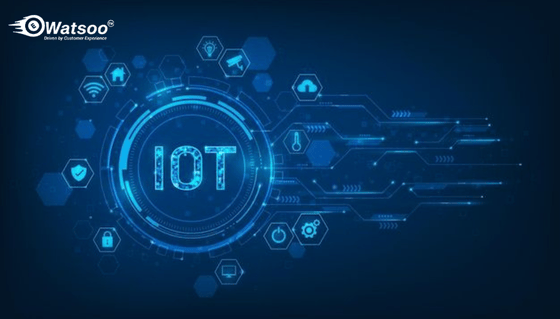Internet of Things (IoT) architecture is the technical solution base for essential industrial modifications. IoT architecture is the foundation of IoT structure and its working processes for industries. IoT enables simplified communication and information transfer. It has brought a huge change to businesses and their workflows, as most regular operations have now become automatic with the support of advanced technologies like AI, ML, and cloud data storage. The modern IoT architectural solution has improved the connectivity and interaction among the devices, software, and people.
We have explored the Internet of Things architecture, its layers, components, diagrams, examples, and M2M (Machine-to-Machine) IoT applications. We have tried our best to present a clear understanding of IoT architectural challenges, advantages, disadvantages, and requirements.
What is IoT Architecture?
Internet of Things architecture is a design or structural framework that illustrates the operational working of IoT systems. This includes data gathering, communication among sources, and information transfer following digital protocols.
The architectural view systematizes the different components in separate layers to ensure the effortless and effective functioning with high security and scalability. It helps shape IoT solutions to fit different industries and sectors.
Let us first look at what IoT is and some of its examples for a better understanding.
What is IoT and Its Examples?
IoT, or the Internet of Things, is a network made up of hardware devices, sensors, software, and applications. The components of this network work collaboratively for instant information transfer via different layers.
The most suitable example of this would be the use of IoT technology in:
- The manufacturing industry for predictive maintenance.
- The logistics for real-time fleet and fuel usage tracking.
- The healthcare for automatic patient health monitoring.
IoT Architecture Diagram
The architecture is the visual representation of the processing layers and data flow in an IoT implementation. An IoT architecture diagram simplifies device interaction and data processing while following digital communication protocols. It provides a user-friendly view that makes the complex system easy to understand. Let us simply understand the diagram with the reference architecture of IoT below.

IoT Reference Architecture
The IoT reference architecture works as a general visual plan for designing IoT processing systems with best practices. It typically includes sensors, cloud servers, analytics, and gateways, arranged in layers to ensure everything works smoothly. The mentioned components are presented across layers to provide interoperability and scalability.
IoT Architecture Layers
The Internet of Things architecture layers present a systematic processing that facilitates communication and operations. Some people break it down into hardware (like physical devices), software (like applications), and transport sections, while others divide it into four layers: application, data processing, network, and sensing. We will discuss the 7-layer architecture of IoT.
Seven-layer Architecture of IoT
We have explained the 7-layer architecture of the IoT model here.
Perception Layer
It is also known as the physical or device layer. This layer of IoT architecture consists of the hardware (or physical) devices like sensors and actuators that gather data from physical parameters (surroundings or environment). The components of this layer are sensors, actuators, smart devices, and embedded systems.
Network Layer
It is also known as the connectivity layer. This layer includes the data transfer from the perception layer to the next lined-up layers in real-time access. Components of this layer are networks, gateways, protocols, and routers.
Edge Computing Layer
This layer processes data near its source and at the “edge” of the network via a server or device. This layer of the IoT architecture minimizes latency and bandwidth usage. Components of this layer are embedded systems, microcontrollers, and edge devices.
Middleware Layer
It is also known as data processing or the platform layer. This layer stores, aggregates, processes, and analyzes informational data. It enables communication and management for distributed applications. The components in this layer are cloud platform, AI/ML algorithms, databases, BIG data warehouses, and data centers.
Application Layer
This layer defines the shared communication protocols and interface methods used in a communications network. It provides interfaces that benefit IoT data transfer. The components of this layer in IoT architecture are dashboards, mobile or enterprise applications, and control systems.
Business Layer
This layer determines the information, manipulates it as required, and returns the result for analytical decision-making. It manages the complete IoT system, including the workflow and business logic. The components of this layer are analytical dashboards, reporting tools, and business management systems.
Security Layer
This layer protects data from cyber threats using advanced encryption methods for confidentiality and accessibility. The components of this layer include numerous tools for hardware devices, software, cloud, applications, and data security.
What are the Components of IoT Architecture?
The Internet of Things architecture is an interconnected, multi-layered framework with the following core IoT architecture components. These are common as an IoT architectural view. The Key IoT Architectural components include:
- Sensors – Devices to collect data from the surroundings.
- Actuators – Devices perform actions according to the processed information.
- Gateways – Devices or platforms that connect devices to the cloud.
- Cloud Platforms – Stores or processes large amounts of device-generated data.
- User Interfaces – Enables human and system communication in the process.
IoT Architecture Advantages and Disadvantages
The Internet of Things architecture has advantages and disadvantages as a technology. First, we will discuss the advantages and then move to the disadvantages.
IoT Architecture Advantages
Some of the common advantages of Internet of Things architecture are:
- Automation of Regular Business Operations
- Real-Time Accurate Data Accessibility
- Optimizes Resource Usage, thus Cost-effective
- Customizable to Industry-Specific Needs
- Easy to Integrate With New Devices
IoT Architecture Disadvantages
Some of the common disadvantages of Internet of Things architecture are:
- Process Complexity That Needs Specialized Skills
- Commencement Cost is Expensive
- Bulk Data or Large Data Set Management
- Digital Security & Cyberattack Risks
- Smooth Interoperability Among Devices
IoT Architecture: Modern Uses and Challenges
Just like any other technical advancement, the Internet of Things (IoT) architecture has its fair share of challenges. It’s used across different fields and by various groups of people.
Uses of IoT Architecture
The Internet of Things architecture is used in different places and works accordingly to the user-specific requirements. Businesses use this architecture for predictive maintenance. Here are some common applications:
Smart Homes, Industrial Automation, Smart Irrigation (Agriculture), Logistics Business (Fleet Management), Smart wearable devices (Healthcare Sector), Environment & Energy monitoring, and Smart Cities.
IoT Architechture Challenges
Simplified IoT architecture, as a solution to diversified industries, faces numerous challenges while working digitally. Some of the common challenges faced by Internet of Things architecture are:
Information Security, Energy Usage, Scalability Concerns, Regularity Issues, Safety Susceptibility, Improper Encryption, Device Safety, and Firmware Updates.
Why Is IoT Architecture Important?
We are now familiar with the challenges, uses, advantages, disadvantages, components, and layers of Internet of Things architecture. We can understand the need for this technological approach for industrial growth with regular process automation and high security.
This architecture’s integration offers scalable solutions, enhances innovation, and enables better decision-making using real-time information accessibility and insights. An advanced IoT technology is responsible for security, efficiency, and adaptability across different applications and systems.
M2M architecture in IoT
Machine-to-Machine communication, also known as M2M communication, in IoT involves devices transferring data directly among themselves without any human intervention. The M2M IoT architecture integrates sensors, networks, and gateways to ensure smooth information transfer and system processes.
What is M2M in IoT?
M2M architecture in IoT comprises the automated data exchange between devices (actuators, sensors, or smart devices). M2M in IoT enables the sensors or actuators to transfer information in real time and form a foundational structure for IoT (Internet of Things).
The most suitable example would be smart parking systems in cities. In this process, the sensors detect the parking spot availability and transfer this information to the drivers via a smartphone application.
What are the Advantages of M2M in IoT?
Here are some benefits of M2M architecture in IoT:
- Reduces Manual Regular Operations
- Workflow Efficiency is Enhanced
- Lower the Additional Expenses
- Optimizes Resource Utilization
- Improved Client-Satisfaction Rate
- Highly Secure and Safe Alternative
M2M architecture in IoT setups has a similar structure to general IoT systems, but can work through direct device communication without the internet.
Smart City IoT Architecture
A smart city Internet of Things architecture integrates sensors (or other devices like actuators), and information storage platforms (like cloud) to enhance the urban lifestyle. Its framework includes sensing, communication, data processing, service, and business logic layers.
What is Smart City Architecture in IoT?
Like a general Internet of Things architecture, the smart city architecture in IoT is a layered structure that combines different IoT layers to improve people’s security and provide services to them. This multi-layered structure incorporates devices, communication networks, data management and transfer systems, and application layers. The authorized individual or organization accesses a centralized management system to control the process and provide energy, transportation, and security services.
How is IoT Used in Smart Cities?
In smart cities, IoT architecture is used for various services, such as traffic control, waste management, public security, and environmental condition monitoring. The implanted sensors and devices generate real-time data from the surroundings and process the information further for analytical observation. This data-oriented approach is useful as it automates the process, lessens the expenses, and enhances durability.
What are the Key Technologies Used in Smart Cities?
Some key technologies for smart cities include:
- IoT-enabled Sensors
- Data Analytics Tools
- Advanced 5G networks
- AI-powered systems
- Machine Learning
- Smart Energy Grids
- Blockchain Data Security
- Energy Monitoring Systems
- Smart Automated Vehicles
- ICT Advancements
- Geospatial technology
What is the Difference Between Smart Cities and Smart Homes in IoT?
The names show the difference as the smart cities are focused on public security enhancement infrastructure, whereas smart homes are focused on optimizing individual living using the smart IoT technology.
Conclusion
This blog explores all the details about IoT architecture, including the layers, components, examples, advantages, disadvantages, uses, challenges, M2M in IoT, and smart city architecture in IoT. IoT is a fundamental part of operational processes in many industries, boosting automation and productivity. We hope you found this informative and useful!
If you’re interested in IoT services for your business, connect with the Watsoo team for tailored telematics solutions, from devices to customizable software systems.


